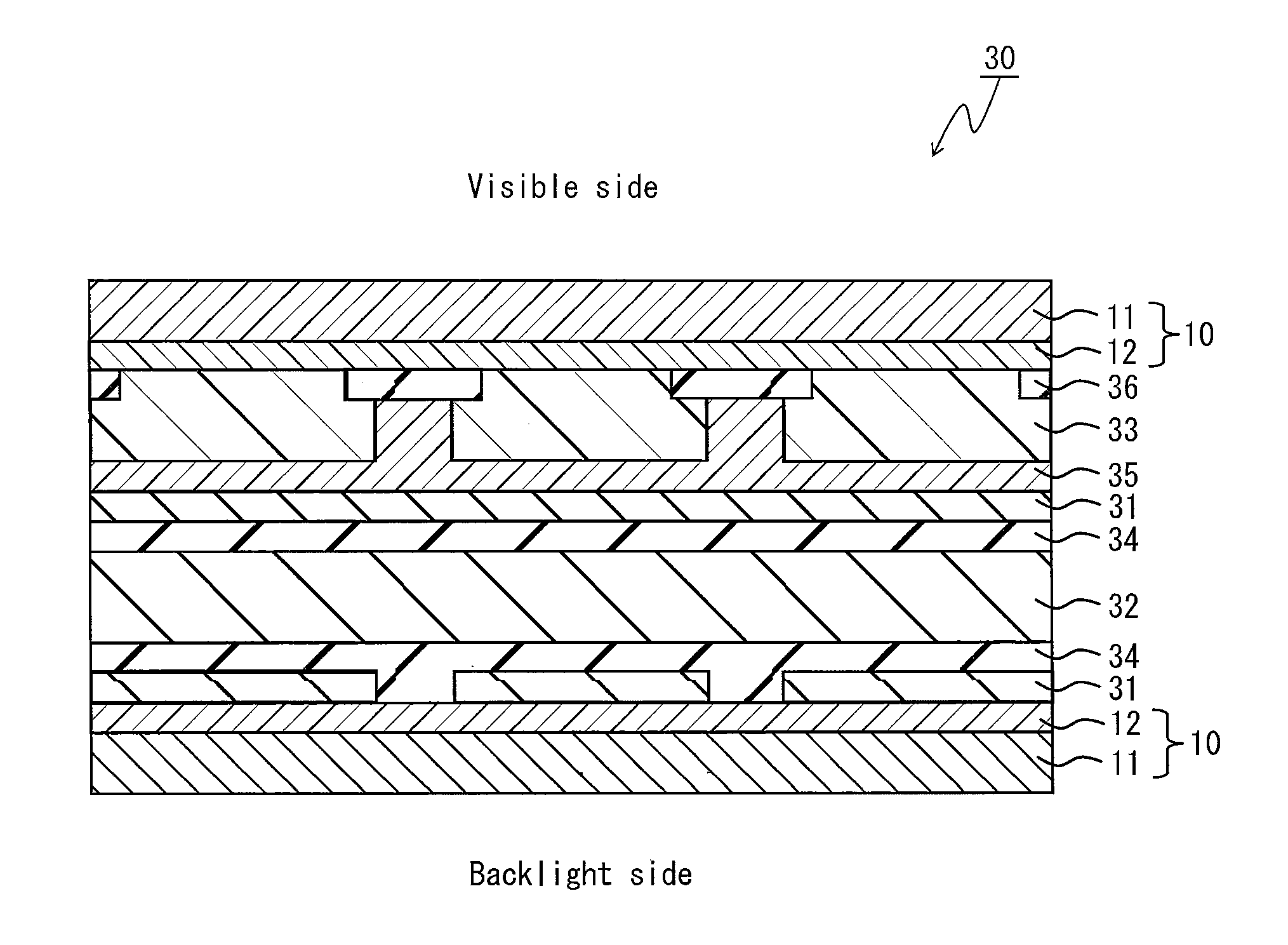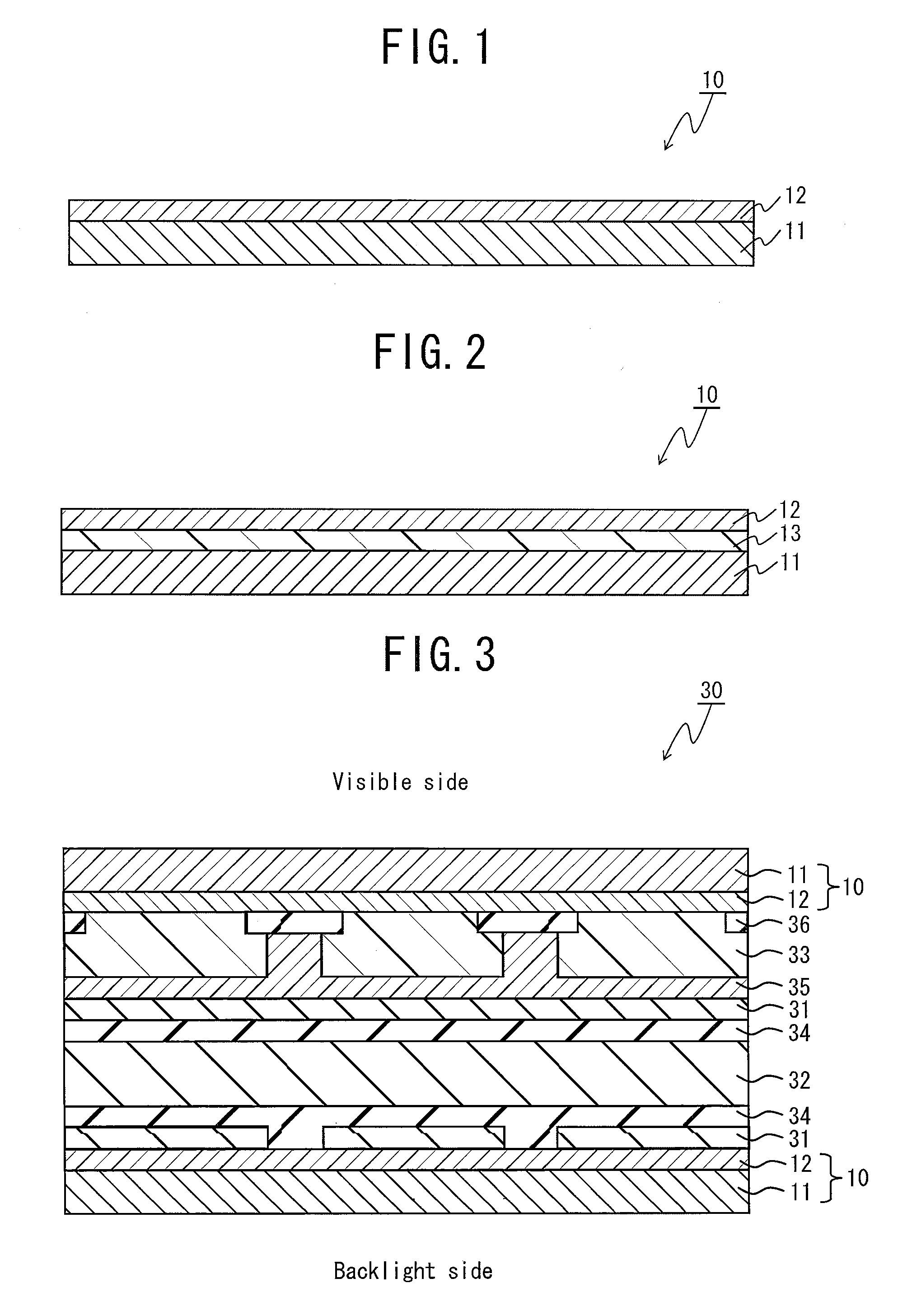Liquid crystal cell substrate, liquid crystal cell, liquid crystal panel, and liquid crystal display
a liquid crystal cell and substrate technology, applied in the direction of liquid surface applicators, instruments, coatings, etc., can solve the problems of difficult control of optical characteristics such as the compounding ratio of optically active groups in the optical compensation layer formed of materials having optically active groups, and achieve the effect of reducing the thickness and weight of the liquid crystal cell substrate, reducing the weight and cost and reducing the thickness and weight of the liquid crystal cell
- Summary
- Abstract
- Description
- Claims
- Application Information
AI Technical Summary
Benefits of technology
Problems solved by technology
Method used
Image
Examples
reference example 1
Production of Resin Substrate
[0153]A mixture composed of 100 parts by weight of an alicyclic epoxy resin represented by the following formula (1), 125 parts by weight of methyl hexahydrophthalic acid anhydride, and 1 part by weight of tri-n-butyl octyl phosphonium bromide was poured into a mold and was subjected to a curing treatment for 2 hours at 120° C. Thus, a 0.4 mm thick resin substrate was obtained. A light transmittance of the resin substrate was 92%, and a glass transition temperature of the same was 210° C.
reference example 2
Preparation of Polyimide Solution
[0154]A 15% by mass polyimide solution was prepared by solving polyimide having a weight-average molecular weight (Mw) of 70,000 that is represented by the following formula (2) and is synthesized from 2,2-bis(3,4-dicarboxyphenyl) hexafluoropropane dianhydride (6FDA) and 2,2′-bis(trifluoromethyl)-4,4′-diamino biphenyl (TFMB) in cyclohexanone. It is to be noted that the preparation and the like of polyimide were conducted with reference to the method described in a document (F. Li et al. Polymer 40 (1999) 4571-4583).
example 1
Production of Liquid Crystal Cell Substrate
[0155]The polyimide solution of Reference Example 2 was applied on one side of the resin substrate of Reference Example 1 such that a thickness of a layer obtained by the application becomes 30 μm, and thereafter, the resin substrate was dried for 10 minutes at 120° C. Thus, a liquid crystal cell substrate having an optical compensation layer was obtained. The polyimide layer after drying had a thickness of 3 μm, satisfied Re(590)=0 nm and Rth(590)=250 nm, and exhibited negative uniaxiality satisfying nx=ny>nz. Further, the wavelength dispersion of this optical compensation layer exhibited a positive dispersion characteristic.
PUM
 Login to View More
Login to View More Abstract
Description
Claims
Application Information
 Login to View More
Login to View More - R&D
- Intellectual Property
- Life Sciences
- Materials
- Tech Scout
- Unparalleled Data Quality
- Higher Quality Content
- 60% Fewer Hallucinations
Browse by: Latest US Patents, China's latest patents, Technical Efficacy Thesaurus, Application Domain, Technology Topic, Popular Technical Reports.
© 2025 PatSnap. All rights reserved.Legal|Privacy policy|Modern Slavery Act Transparency Statement|Sitemap|About US| Contact US: help@patsnap.com



